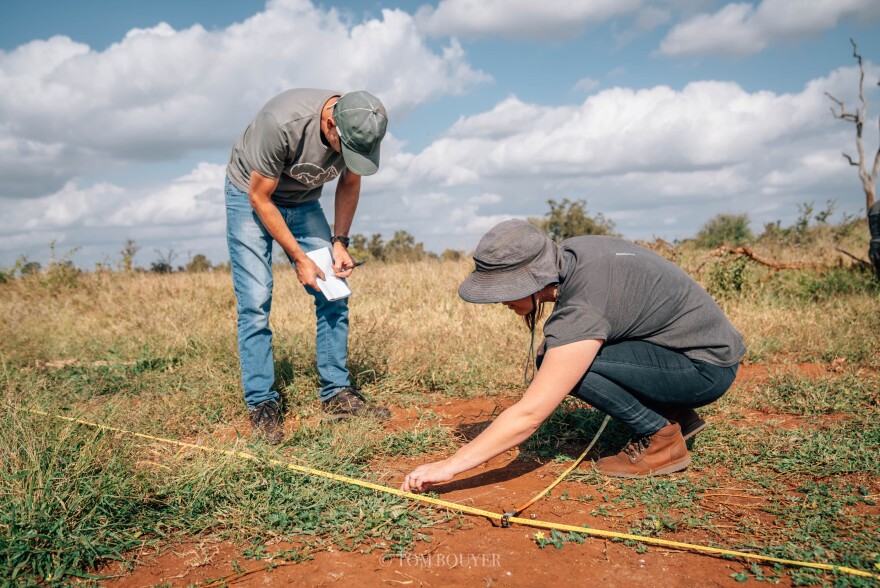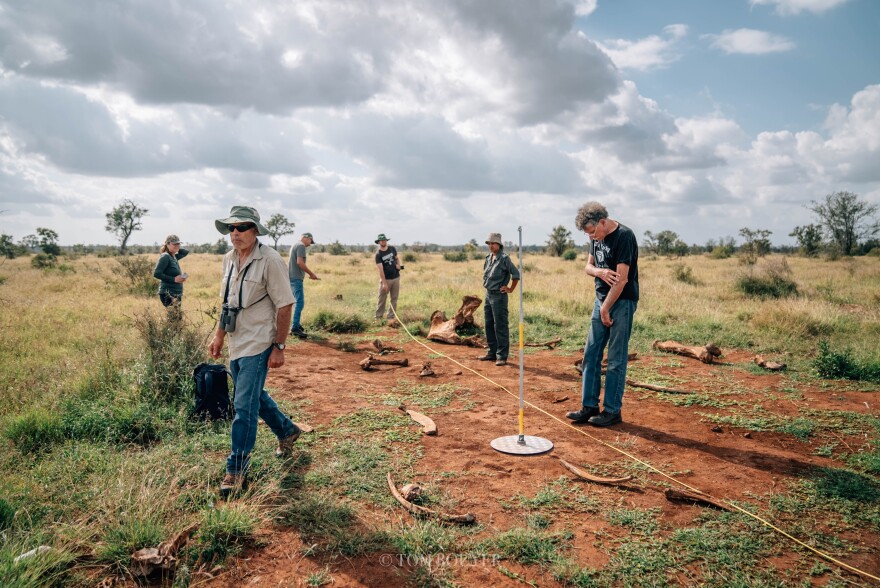Ryan Helcoski: I'm working in Kruger National Park. It's one of the flagship parks of Africa. It's about the size of New Jersey, or twice the size of Yellowstone. It's a massive, massive park, and it's in the northeastern part of South Africa, so it borders several other countries, and it's essentially one of the last fully intact savannas in the world.
So there are somewhere between 13,000 and 30,000 elephants, there's hyenas, lions, leopards, cheetahs, and vultures, there's all kinds of wildlife here. And I work in this environment studying elephant carcasses.

Sheri Quinn: And has it been dangerous? How careful do you have to be?
Ryan Helcoski: Yes. So there's some animals that you have to be more wary of than others. For the most part, when you're working in the bush, you need to be wary. You need to be wary at all times, most animals avoid people. Elephants can be kind of tricky. They they like to kind of mess with people and get closer than maybe they should, but as long as you're cautious and show them respect, they respect you.
Hippos can be extremely dangerous. I don't work in any area where there's a lot of water. I don't work near or around hippos. Lions are usually fairly easy to scare off with loud noises. It can be dangerous if you're not really aware of your surroundings, but thankfully, we do go out with the team, and we've always been safe when we're in the field.
Sheri Quinn: This isn't the first time Helcoski has been here. In addition to finding new elephant carcass sites, he's revisiting some that he mapped last year. He's tracking the new positions of the bones and setting up wildlife cameras.
Ryan Helcoski: There are a lot of different experiments we're doing, but essentially, the biggest question is what impact an elephant carcass site has on the environment? And so that means looking at soils, bones, and animals' behaviors, and it means looking at grass growth and the effect of nutrients on trees. So there's a lot of things that we're doing, but it's all to try and answer that question, and how do other elephants change that impact?

We've been finding that elephants revisit these sites more often than we thought, they spend time there, and they move bones. So they're distributing bones and they're spending a lot of time in the area. They're depositing dung and urine, and they're changing the ecology.
We found bones that were under the ground that elephants had stomped into the ground. We found skulls that they've moved more than 500 meters away. We don't know exactly why they do what they do, but it has an ecological impact. That's what's really interesting to me.





